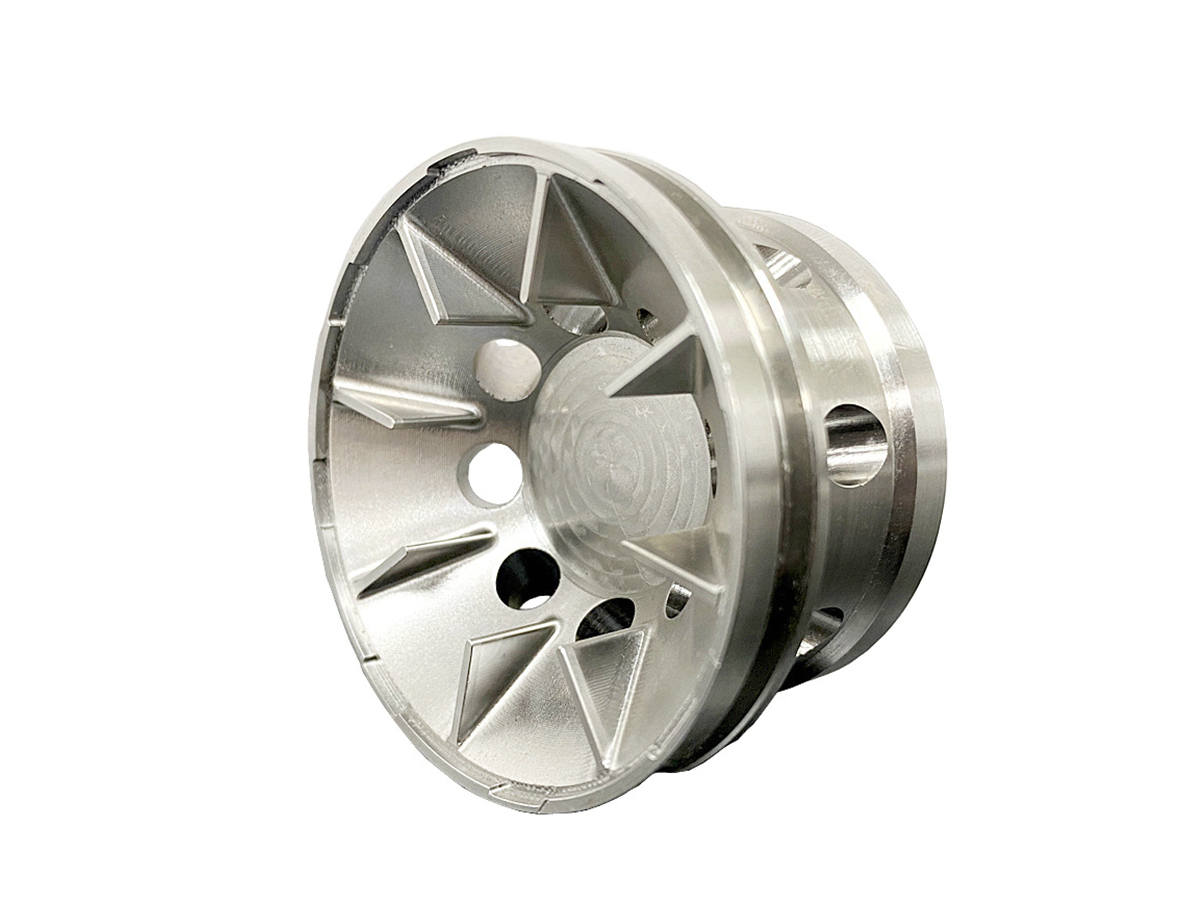CNC Machined Carbon Steel Parts for Durable Aerospace Airframes
Introduction to CNC Machined Carbon Steel Parts for Aerospace Airframes
Aerospace airframes are subjected to high stresses, extreme temperatures, and harsh environmental conditions. CNC machining of carbon steel offers a robust solution for manufacturing aerospace airframe components that require high strength and durability. Carbon steel alloys, such as A36, 1018, and 4130, provide the necessary mechanical properties to withstand the demanding environments of aviation.
CNC machining of carbon steel enables the production of precise, custom components like structural beams, supports, landing gear brackets, and fuselage frames. These components contribute to aerospace airframes' overall strength, safety, and performance, ensuring long-term reliability and efficiency for aircraft operations.
Material Performance Comparison for Carbon Steel Parts in Aerospace Airframes
Material | Tensile Strength (MPa) | Thermal Conductivity (W/m·K) | Machinability | Corrosion Resistance | Typical Applications | Advantages |
|---|---|---|---|---|---|---|
250-400 | 54 | Excellent | Good (>500 hrs ASTM B117) | Structural components, fuselage frames | High strength, ease of fabrication | |
370-440 | 51 | Excellent | Fair (>400 hrs ASTM B117) | Support structures, brackets | Good machinability, low cost | |
700-950 | 44 | Moderate | Good (>500 hrs ASTM B117) | Aircraft structural parts, landing gear components | High strength-to-weight ratio, excellent fatigue resistance | |
570-700 | 45 | Moderate | Good (>500 hrs ASTM B117) | High-strength structural components | High tensile strength, good wear resistance |
Material Selection Strategy for Carbon Steel Parts in Aerospace Airframes
A36 Steel is a low-carbon steel that offers a tensile strength of 250-400 MPa and is commonly used to manufacture structural components and fuselage frames. It provides ease of fabrication and welding, making it a cost-effective choice for various aerospace applications that do not require the highest strength.
1018 Steel has a tensile strength of 370-440 MPa and is known for its excellent machinability. This material is often used for support structures and brackets in aerospace airframes where low cost and ease of machining are critical. Its fair corrosion resistance makes it suitable for many aerospace applications with moderate environmental exposure.
4130 Steel provides a higher tensile strength (700-950 MPa) and is ideal for high-strength, lightweight aerospace components, including aircraft structural parts and landing gear. Its excellent fatigue resistance and high strength-to-weight ratio make it a preferred choice for components subjected to frequent mechanical stress.
1045 Steel is a medium-carbon steel with a tensile strength of 570-700 MPa, making it suitable for high-strength aerospace structural components. Its good wear resistance and tensile strength make it ideal for use in parts that experience significant mechanical load, ensuring reliability in aerospace airframes.
CNC Machining Processes for Carbon Steel Parts in Aerospace Airframes
CNC Machining Process | Dimensional Accuracy (mm) | Surface Roughness (Ra μm) | Typical Applications | Key Advantages |
|---|---|---|---|---|
±0.005 | 0.2-0.8 | Structural beams, fuselage components | Complex geometries, high precision | |
±0.005-0.01 | 0.4-1.2 | Landing gear components, shafts | Excellent rotational accuracy | |
±0.01-0.02 | 0.8-1.6 | Mounting holes, attachment points | Accurate hole placement | |
±0.002-0.005 | 0.1-0.4 | Surface-sensitive components | Superior surface smoothness |
CNC Process Selection Strategy for Carbon Steel Parts
5-Axis CNC Milling is perfect for producing complex carbon steel components such as structural beams and fuselage parts. This process allows for intricate geometries with high precision (±0.005 mm) and smooth surface finishes (Ra ≤0.8 µm), which are crucial for the performance and safety of aerospace airframes.
CNC Turning ensures that cylindrical parts such as landing gear components and shafts are produced with exceptional rotational accuracy (±0.005 mm). This process guarantees that parts meet stringent dimensional requirements, ensuring their functionality and durability in high-stress aerospace environments.
CNC Drilling ensures accurate hole placement (±0.01 mm) for components requiring precise mounting holes and attachment points. This process is vital for maintaining structural integrity and alignment in aerospace systems, contributing to airframes' overall safety and performance.
CNC Grinding achieves fine surface finishes (Ra ≤ 0.4 µm) on carbon steel parts, ensuring that parts such as bearings, gears, and other surface-sensitive components maintain smooth surfaces that reduce wear and enhance their operational lifespan in aerospace applications.
Surface Treatment for Carbon Steel Parts in Aerospace Airframes
Treatment Method | Surface Roughness (Ra μm) | Corrosion Resistance | Hardness (HV) | Applications |
|---|---|---|---|---|
0.4-1.0 | Excellent (>1000 hrs ASTM B117) | 400-600 | Carbon steel aerospace components | |
0.2-0.6 | Excellent (>800 hrs ASTM B117) | 1000-1200 | Protective coatings for airframe components | |
0.1-0.4 | Superior (>1000 hrs ASTM B117) | N/A | Aerospace components, high-performance surfaces | |
0.2-0.8 | Excellent (>1000 hrs ASTM B117) | N/A | Heat-treated carbon steel parts |
Typical Prototyping Methods
CNC Machining Prototyping: High-precision prototypes (±0.005 mm) for functional testing of carbon steel aerospace components.
Rapid Molding Prototyping: Fast and accurate prototyping for aerospace parts like brackets, structural supports, and landing gear.
3D Printing Prototyping: Quick turnaround prototyping (±0.1 mm accuracy) for initial design validation of carbon steel parts.
Quality Inspection Procedures
CMM Inspection (ISO 10360-2): Dimensional verification of carbon steel parts with tight tolerances.
Surface Roughness Test (ISO 4287): Ensures surface quality for precision components used in aerospace airframes.
Salt Spray Test (ASTM B117): Verifies corrosion resistance performance of carbon steel parts in harsh environments.
Visual Inspection (ISO 2859-1, AQL 1.0): Confirms aesthetic and functional quality of carbon steel components.
ISO 9001:2015 Documentation: Ensures traceability, consistency, and compliance with industry standards.
Industry Applications
Aerospace: Carbon steel structural components, fuselage frames, landing gear brackets.
Automotive: Engine components, exhaust systems, structural supports.
Oil and Gas: Pressure vessels, valve bodies, machinery components.
FAQs:
Why is carbon steel used for aerospace airframe components?
How does CNC machining improve the precision of carbon steel parts?
Which carbon steel alloys are most suitable for aerospace applications?
What surface treatments enhance the durability of carbon steel in aerospace airframes?
What prototyping methods are best for carbon steel components used in aerospace?

